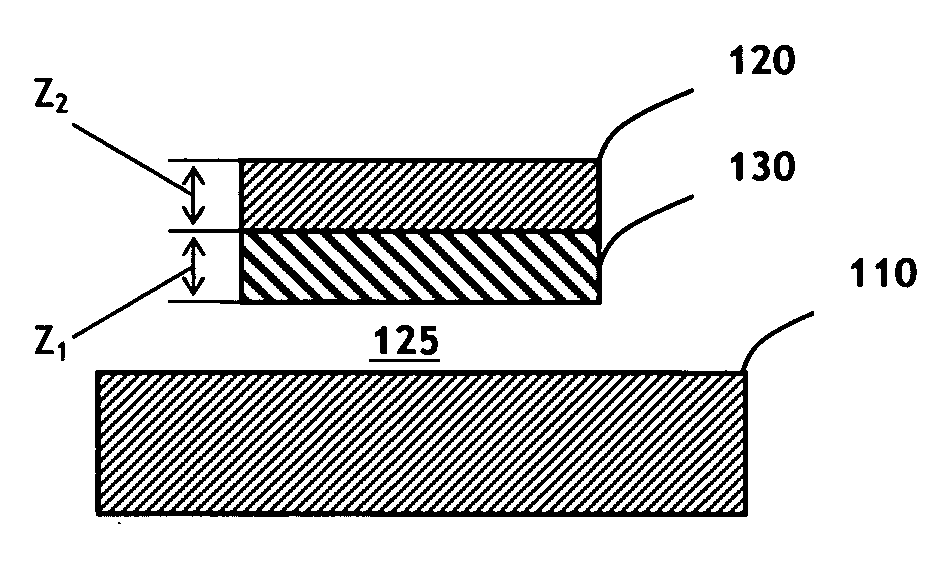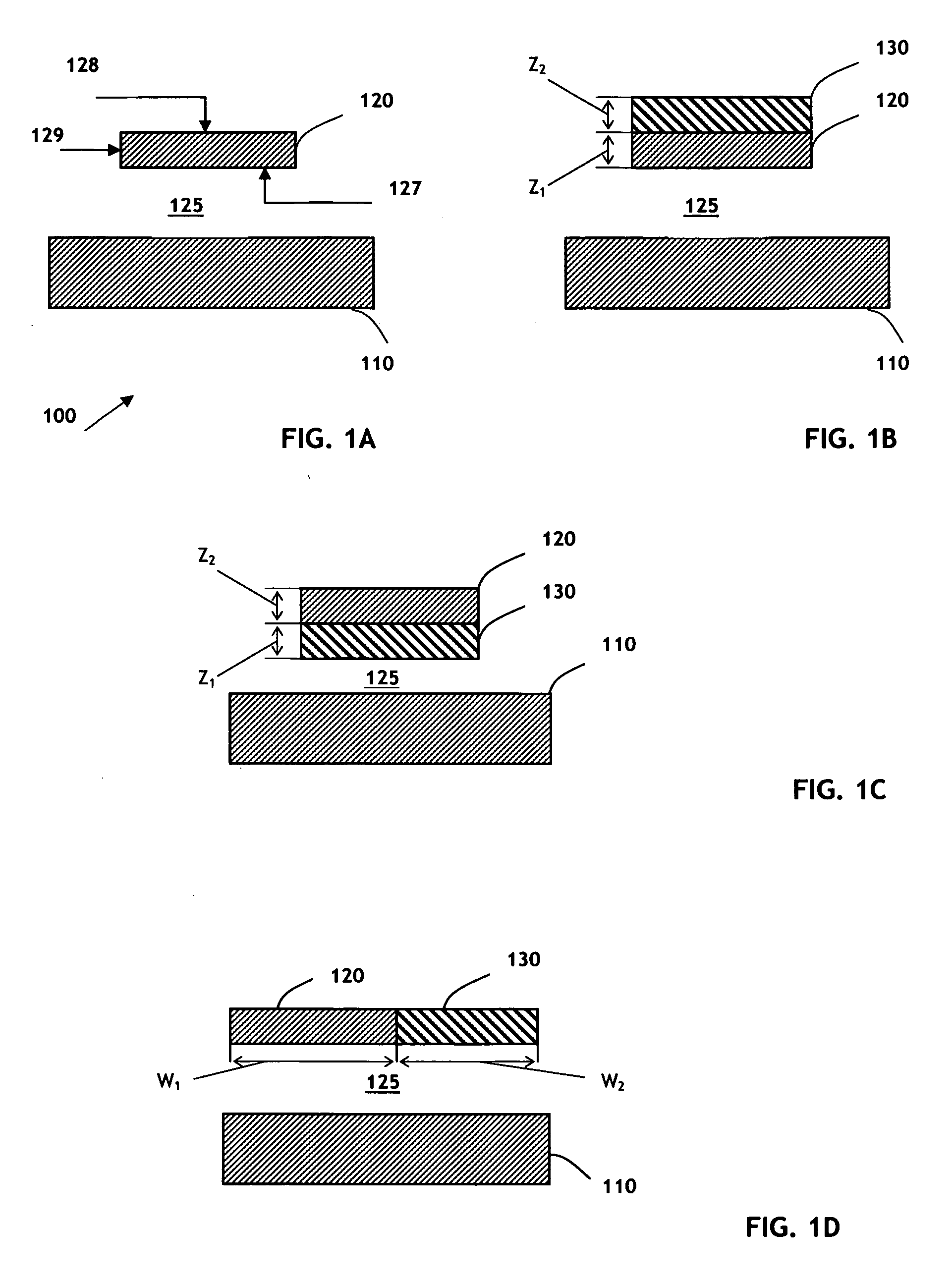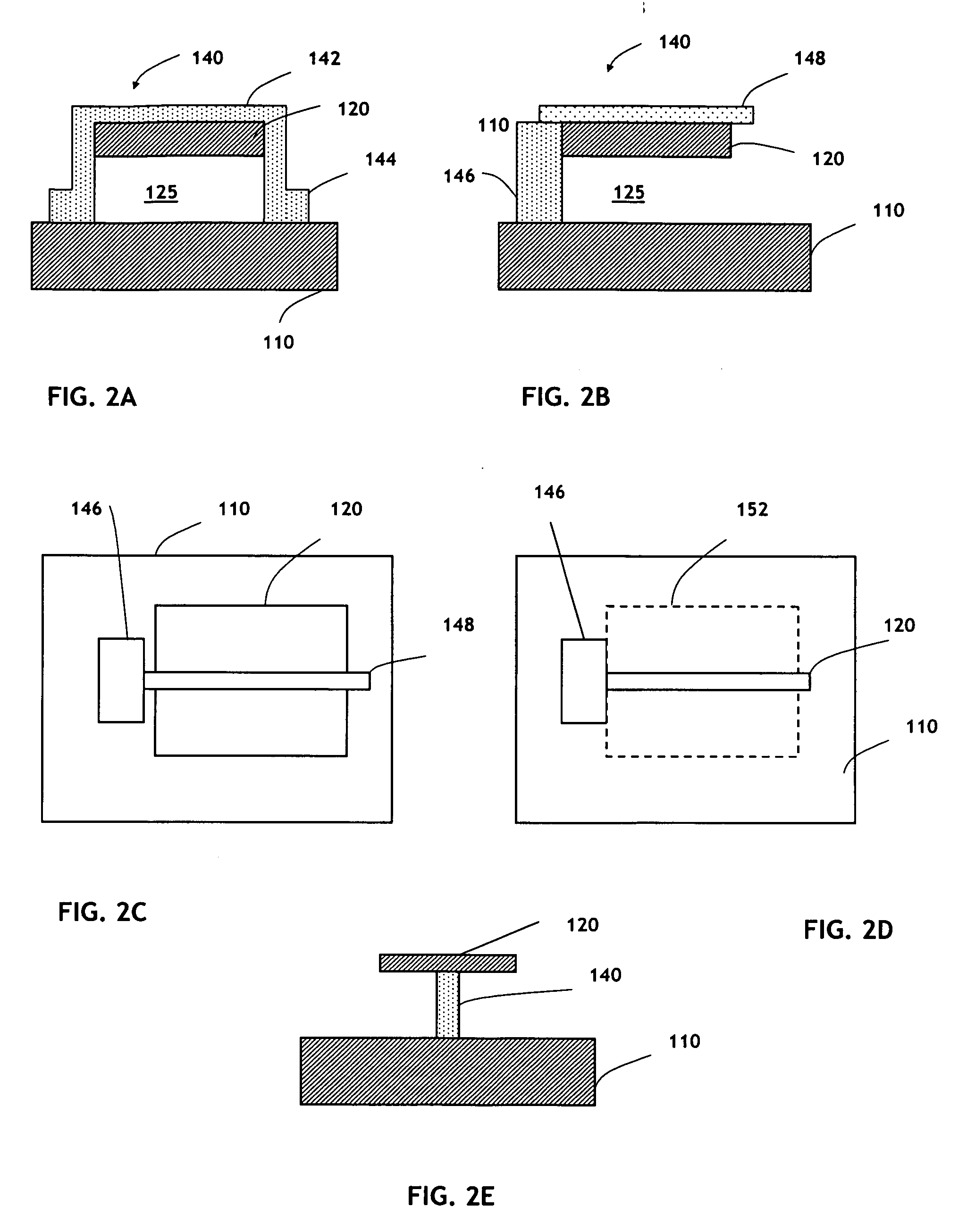Lattice-mismatched semiconductor structures employing seed layers and related fabrication methods
- Summary
- Abstract
- Description
- Claims
- Application Information
AI Technical Summary
Benefits of technology
Problems solved by technology
Method used
Image
Examples
Embodiment Construction
[0038] The present invention generally focuses on fabrication of lattice-mismatched semiconductor heterostructures with significantly minimized dislocation defects, as well as on fabrication of various semiconductor devices based on such heterostructures. Also, in certain aspects of the invention, direction, degree, and / or type of the strain induced within the heterostructure is controlled for improved manufacturability, functionality, and performance of the semiconductor devices based thereon. In contrast with the prior art approaches of minimizing dislocation defects, in its various embodiments, the present invention addresses the limitations of known techniques, by utilizing substrate-isolated regions for facilitating elastic lattice conformation between the lattice-mismatched materials.
[0039] As mentioned above, many embodiments of the claimed invention employ semiconductor heterostructures, i.e., structures including two or more layers of semiconductor materials with different...
PUM
 Login to View More
Login to View More Abstract
Description
Claims
Application Information
 Login to View More
Login to View More - R&D
- Intellectual Property
- Life Sciences
- Materials
- Tech Scout
- Unparalleled Data Quality
- Higher Quality Content
- 60% Fewer Hallucinations
Browse by: Latest US Patents, China's latest patents, Technical Efficacy Thesaurus, Application Domain, Technology Topic, Popular Technical Reports.
© 2025 PatSnap. All rights reserved.Legal|Privacy policy|Modern Slavery Act Transparency Statement|Sitemap|About US| Contact US: help@patsnap.com



